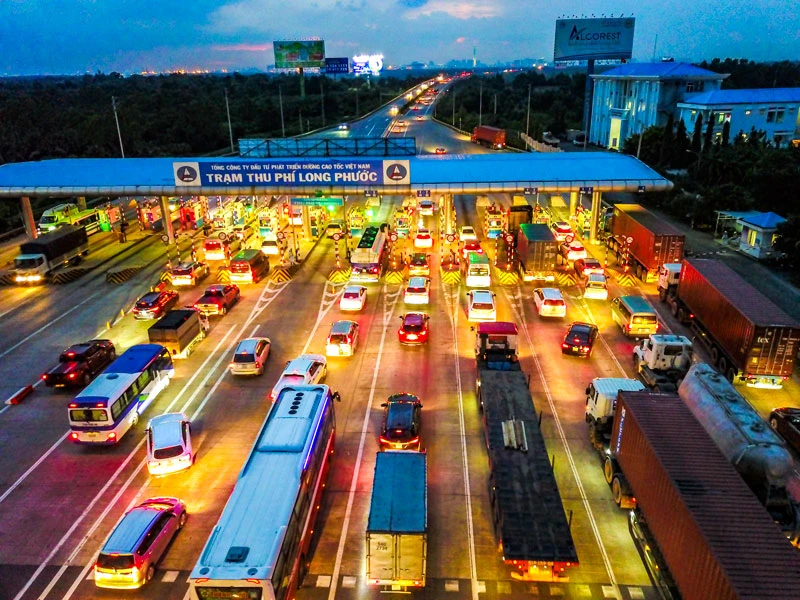
However, up until now, the banking industry is still continuing to face many risks with almost VND 53,000 billion logged in BOT projects, leading to risk of bad debts.
Speaking on this issue with Saigon Investment, Dr. Vo Tri Thanh, former Deputy Director of Central Economic Management and Research Institute, pointed out the fact that SBV had repeatedly proposed to the Government to maintain debt groups for the National Highway No.19 project in particular, and BOT projects in general, that showed decreasing revenue.
JOURNALIST: - Sir, what do you think about the State Bank proposal to the Government stating objective reasons?
Dr. VO TRI THANH: - The financial system in Vietnam relies on and is based heavily on the banking system. Resources of enterprises participating in BOT projects are quite limited, while capital from banks still plays an important role in these projects. Therefore, loans must be carefully applied in BOT projects. This is not a new issue, but several years ago, prior warnings were given early. In fact, loans for infrastructure development are to provide long-term loans with a large amount of capital.
This can lead to two potential high risks. Firstly, it is a deviation in term structure. Commercial banks basically mobilize short-term capital but actually offer long-term loans. This is the reason why the banking industry has complied with the ratio of short-term capital in medium and long-term durations in recent years, to minimize the risk of deviation in mobilization and loan-term structure.
Secondly, deviation in the balance sheet of banks and deviation in term structure may lead to a liquidity risk. The risk of liquidity will actually happen if capital for infrastructure projects is allocated ineffectively, or because of many other reasons that are likely to lead to bad debts arising from lack of cash flow. Basically, the State Bank had already identified the root of this problem years ago when asking other banks to consider carefully before lending money for BOT transport projects.
Discussing the SBV proposal submitted to the Government to continuously keep the debt groups for the BOT project of National Highway No.19 in particular and the BOT projects in general that show decreasing revenue due to objective reasons, is an effort aimed at carrying on a struggle against bad debts, and to strengthen the banking system. If this current problem isn’t solved like this, not only could the banking system develop negatively, but the whole process of infrastructure project development could be delayed as well. Thus, it requires us to resolve such problems satisfactorily. However, as a last resort, this is only a temporary solution while the commercial banks are struggling hard to become healthy again. To get to the root cause of this situation, key issues must be recognized, which apparently SBV has already done.
- In your opinion, what solutions are necessary for infrastructure projects to develop successfully through BOT despite so many risks arising?
- First of all, a range of evaluation criteria needs to be established to determine and define the investor, the feasibility and effectiveness of the projects, and the plans pertaining to risk management for the sole purpose of minimizing risks. This helps infrastructure projects develop successfully through the BOT model. But that is only a technical solution. To develop these projects, two issues need basic consideration.
First, define exactly who the investor is. Currently, good and positive policies are for domestic enterprises. But many domestic enterprises show their weaknesses and lack of competence, leading to difficulties in the implementation of BOT projects. Therefore, the scope of investors should be expanded, for example, through international bidding.
Second, the investors implementing BOT projects have to expand mobilization channels for more capital. The investors can issue corporate bonds, and call for capital from investment funds instead of depending entirely on bank credits.
- BOT in particular and investment in the form of PPP (Public-Private Partnership) in general have been stipulated at Decree level only. So the Ministry of Planning and Investment is now drafting a new PPP Law. What do you think about a new PPP law in coming time?
- I hope that under the PPP Decree and through valuable lessons learnt by complying with regulations, we will learn how to formulate policies that are not only good practices but also suitable in the current context in Vietnam. Presently, the financial system has not yet been developed and is diversified insufficiently. Specifically, we have also had international bidding but mainly for ODA projects. Now, when the agreements are committed to issues related to Government procurement, Vietnam can consider learning useful lessons from other countries to properly select and apply to the Vietnamese Law in the hope of further development for such investment.
However, I also want to emphasize that the PPP model can address several essential needs of infrastructure, but it is not a universal recognition for infrastructure development, because many countries around the world have failed to implement PPP projects successfully.
- Thank you very much!




















